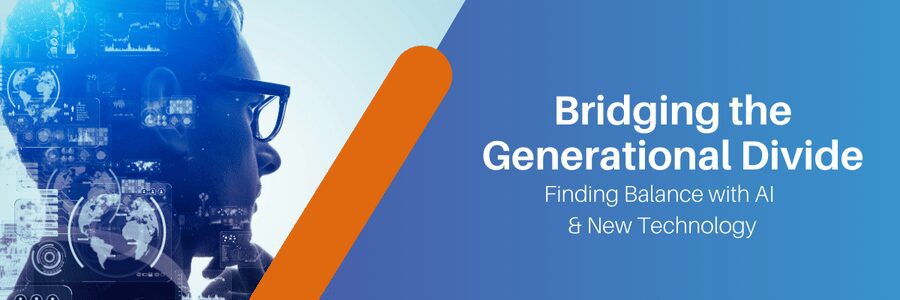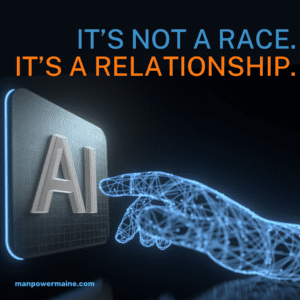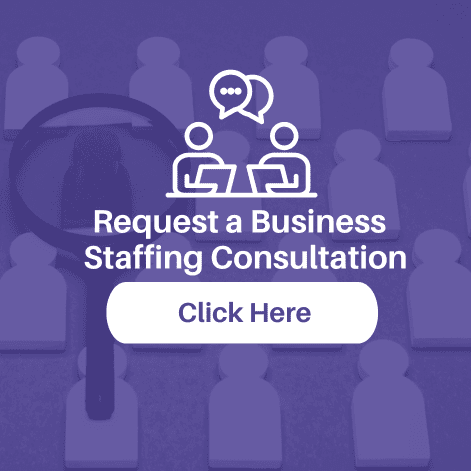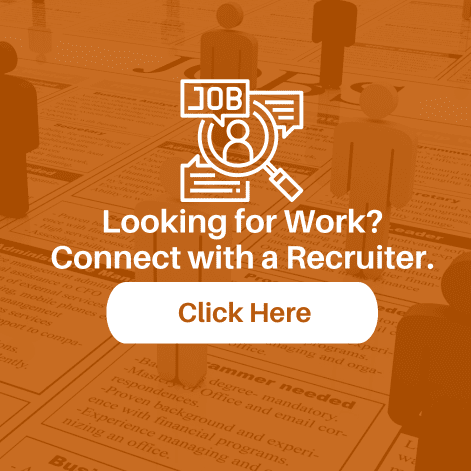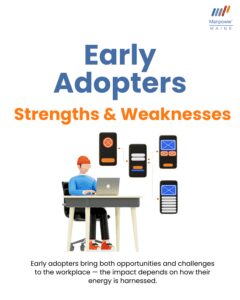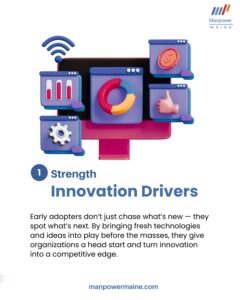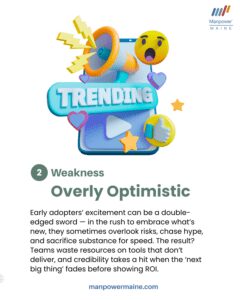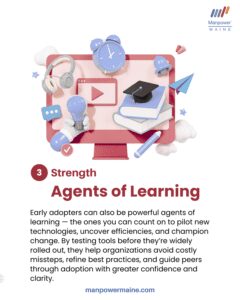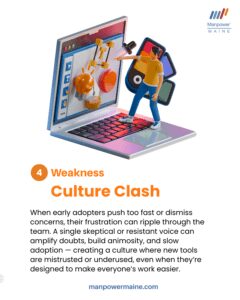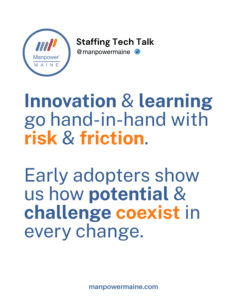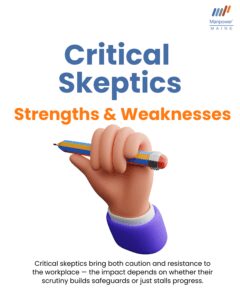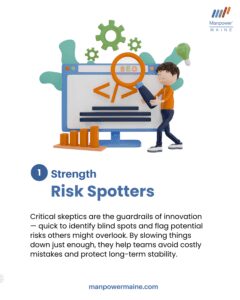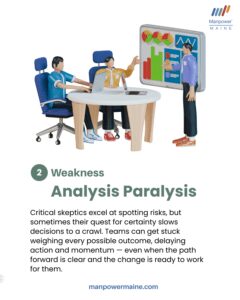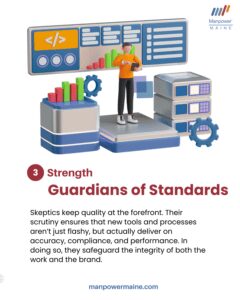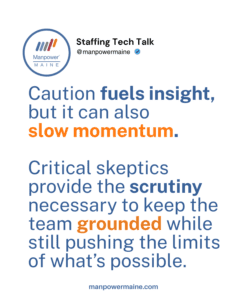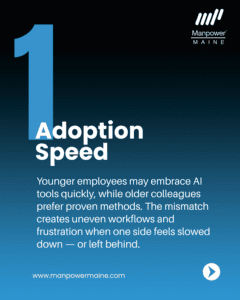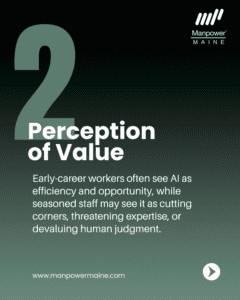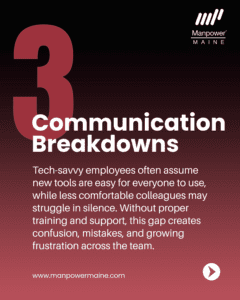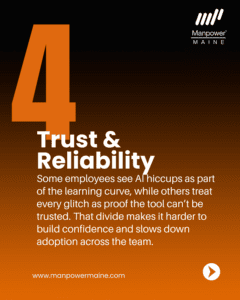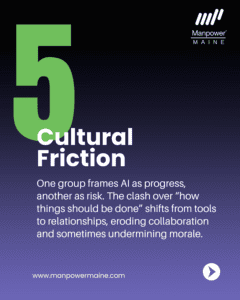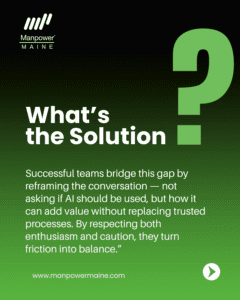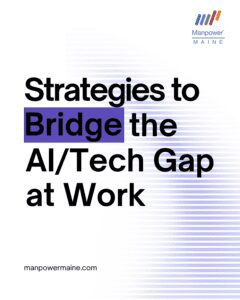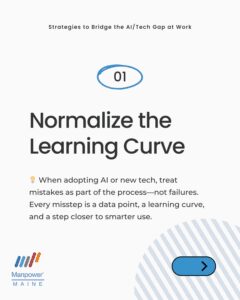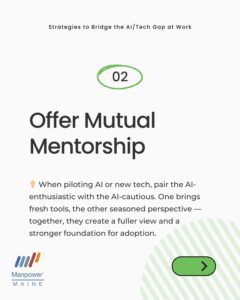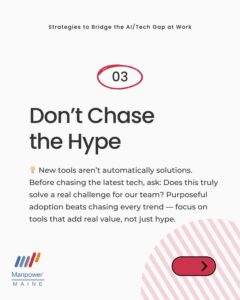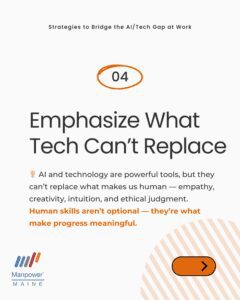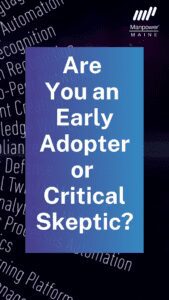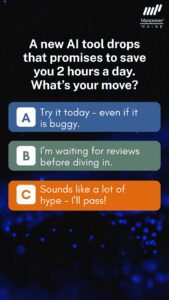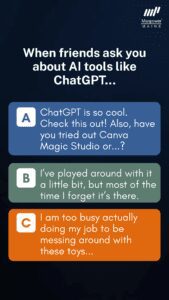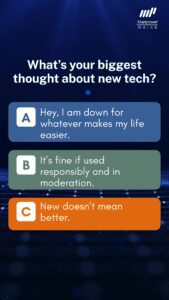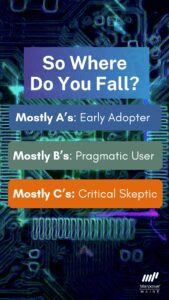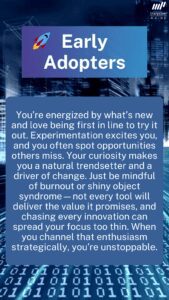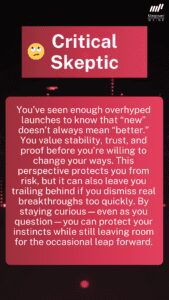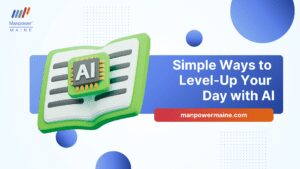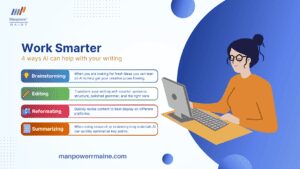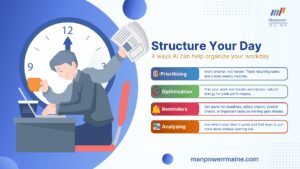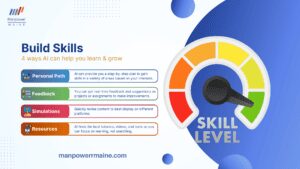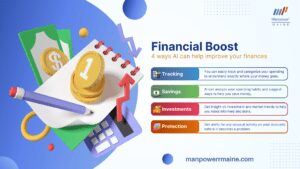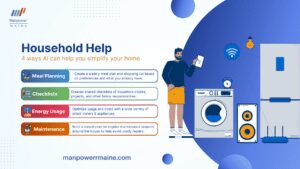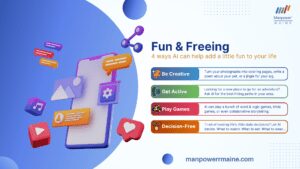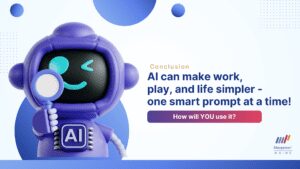Bridging the Generational Divide: Finding Balance with AI and New Technology
Technology sparks both excitement and skepticism — especially across generations. Some dive headfirst into AI and the latest tools, eager to automate and optimize. Others hesitate, wondering if we’re relying too much on machines and losing critical thinking along the way. This divide can lead to real friction in the workplace, especially as teams span Baby Boomers to Gen Z.
A scenario we can all relate to
A hiring committee reviewing a new batch of resumes. One team member immediately notices that several applications sound eerily similar — polished, keyword-optimized, and lacking a personal voice. “These were clearly written by AI,” someone says, raising an eyebrow. A debate follows: Is it smart to use tools to refine your resume? Or does it diminish the authenticity and effort behind the application?
Some committee members argue that leveraging AI shows resourcefulness — a skill in itself. Others worry it masks real communication ability or critical thinking. The room splits, not just by opinion, but subtly along generational lines. What one group sees as efficiency, the other sees as cutting corners. The tech itself isn’t the problem — it’s how we interpret its use.
So how do we bridge the gap? And how can we use technology like AI to enhance collaboration rather than deepen the disconnect? Below are a few strategies to help navigate this evolving digital landscape — with balance, awareness, and mutual respect.
The Early Adopters vs. The Skeptics
Every workplace has them.
- The early adopters, who enthusiastically jump into the latest apps, tools, and AI platforms. They automate emails, generate content with AI, and are constantly looking for ways to do more with less.
Potential Challenge: When early adopters move too quickly, there’s a risk of quality issues from poorly vetted automation and unexpected downtime that stems from overly accelerated workflows.
- The skeptics, who value traditional processes, worry about over-reliance on machines, and often question whether AI tools are actually improving outcomes — or just creating shortcuts that bypass critical thinking.
Potential Challenge: Resistance to change can sometimes stem from a sense that long-standing methods are being replaced or undervalued, which can feel personal, even if that’s not the intent.
These groups often split along generational lines, but not always. While younger professionals tend to embrace digital tools quickly, there are seasoned professionals who are just as curious — and younger ones who are deeply skeptical of where all this is going.
The point is: neither side is necessarily right or wrong. But the tension between them is real.
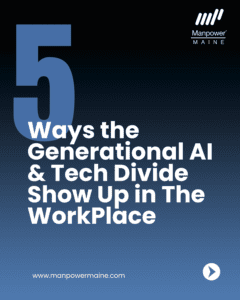 Why the Disconnect Matters
Why the Disconnect Matters
The gap in comfort levels with tech — especially AI — can create:
- Miscommunication: Tech-savvy employees may assume everyone’s on the same page when introducing new tools, leading to confusion or resistance.
- Slowed adoption: Projects involving new tech can stall if a portion of the team feels left behind or unheard.
- Overuse or misuse: On the flip side, early adopters may rely too heavily on AI tools, sacrificing quality or originality in favor of speed.
- Cultural friction: When one generation sees AI as progress and another sees it as threat, collaboration suffers.
- Trust issues: For those already hesitant, even a small hiccup can feel like validation that technology isn’t reliable, making future buy-in even harder to achieve.
It’s not just about who uses the latest tools. It’s about how people perceive change, and how those perceptions impact team dynamics.
Strategies to Bridge the Gap
To move forward, we don’t need to choose sides. We need to find balance — and that starts with creating space for dialogue, empathy, and shared learning.
Normalize the Learning Curve
Not everyone will master new tools on day one — and that’s okay. This is evolving technology, and we’re all learning together. Hiccups will happen, but they’re part of the process. When we take time to reflect and correct, even glitches help us and the tech improve.
Encourage Cross-Generational Mentorship
Pair AI enthusiasts with those who are more hesitant. Let the knowledge flow both ways — technical skills in one direction, and critical thinking, domain expertise, and caution in the others
Avoid the Hype Trap
Just because a new tool exists doesn’t mean it’s right for your team. Set a culture of thoughtful adoption, where purpose comes before novelty
Reframe the Conversation
Instead of asking “Are you using XYZ yet?”, ask “How could XYZ help make this process better?” or “Where should we still rely on current processes?” This shifts the focus from pressure to curiosity
Emphasize What Technology Can’t Replace
Technology is powerful, but it doesn’t replace emotional intelligence, creative intuition, or ethical judgment. Always celebrate and protect the human skills that matter most.
Final Thoughts: It’s Not a Race — It’s a Relationship
Technology isn’t slowing down — and neither is the conversation around it. The goal isn’t to convince everyone to adopt every tool, or to pump the brakes on progress. It’s to build a workplace culture that respects differing perspectives, learns together, and uses technology intentionally.
Whether you’re excited by the promise of AI and evolving technologies or cautious about the implications, one thing is clear: we need all voices at the table. Because when generations listen to — and learn from — one another, we don’t just adapt to change. We shape it.
Oh, and just in case you are wondering… This article itself is a small example of balance — drafted by a human, refined with AI, and finished with human judgment.

